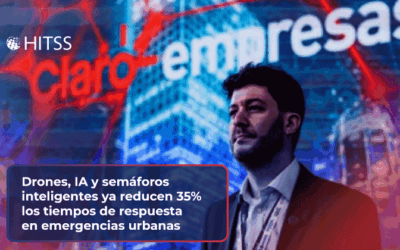
One of the many things Covid-19 has taught us is that things can change radically from one day to another. Our executive team had developed a business plan for 2020, which surely no longer applies, so we must create a new one quickly that allows us to adapt to the current situation and what lies ahead.
Undoubtedly, the landscape is still uncertain in various areas, but we can create 2 or 3 alternative scenarios where it will be essential to engage employees, customers, suppliers, and shareholders to build their confidence in our organization.
To achieve this, one of the most crucial activities right now by top management is communication. Sharing with all audiences that we have a clear idea of what we are doing to address the contingency, that we have a direction, and that necessary measures are being taken to progress towards the achievement of objectives. And although there is still not much clarity in some aspects, it is essential to let stakeholders know that we have plans for different scenarios that may arise.
To achieve positive results, I recommend having a well-structured communication plan with defined objectives and messages, ready-to-use tools, and different action scenarios. Business Consulting Group (BCG) suggests focusing on these 4 actions for effective communication:
-
Continually reinforce the corporate purpose and its meaning in the post-Covid period to provide a long-term perspective, inspire the organization, and create continuity in the message.
-
Anchor the communication in principles that reflect core values, which serve as a guide in decision-making and establish uniform high standards of effectiveness and quality, ensuring that leaders maintain focus on their objectives.
-
Employ a communication platform and a creative approach to engage the hearts and minds of key audiences, touching people’s emotions to expose explicit actions that will support recovery, new actions, and changes for the future.
-
Prepare detailed communication to address various scenarios, each with critical messages adapted to different circumstances, including a guide on how to use the most appropriate pre-designed module for each emerging situation.
Communication between work teams is also fundamental. We may have the sales team requesting certain products that their customers demand, while the production team assures they are 100% ready with other products because the planning department forecasted that they would sell.
A good idea to address this issue could be to form multidisciplinary teams, not only from different areas but with different levels of experience, responsibility, and even ages. In these turbulent times, our production or finance director may have excellent ideas, just like a market analyst or a call center manager.
Let’s make use of the expertise of veterans, as well as the ideas of the younger generation or the insights from some of our employees’ interactions with customers or suppliers, to define the course to take.
Remember that, in all cases, the first link in communication should be our work team to ensure their participation and contribution to disseminate the messages to the rest of the key audiences, and that communication should be meaningful at all times to motivate the different audiences to stay focused on the common goal.
Finally, an excellent piece of advice I recently read in an interview where they asked the former MIT president, Charles Vest, how he managed to do all he did, and he simply answered, «Chip Away.» In other words, let’s shed the complex and structured rules, set our priorities, and do everything possible to achieve them correctly and quickly, together with our team.

Felipe Labbé
Business strategy and digital transformation consultant.




